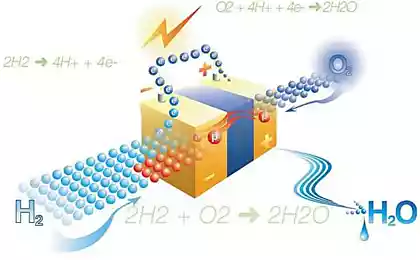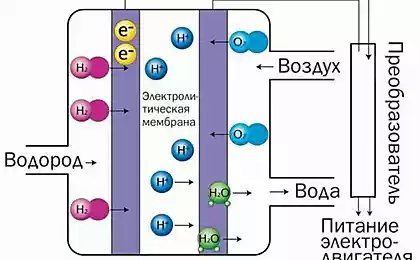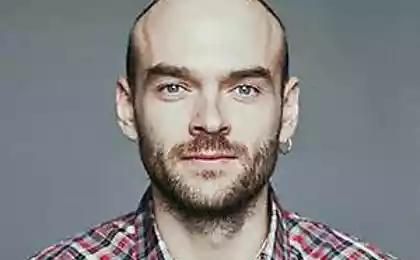479
Created first of its kind paper microbial fuel cells
A group of researchers from the University of Iowa (Iowa State University) demonstrated the first functional prototypes paper microbial fuel cell (microbial fuel cell, MFC), which use the capillary properties of paper to ensure the flow of liquid through the element. The prototype operates continuously for 5 days, producing energy in the amount of 1.3 µw at a current of 52.25 µa, and the total energy density of these fuel cells is 25 watts per square meter. These figures demonstrate that such fuel cells can already act as a source of energy is completely harmless to the environment.
Eighty million seven hundred sixty thousand eighty six
The basis of the fuel cell is a thin film of microorganisms Shewanella Oneidensis MR-1 grown on the surface of carbon fabric, a kind of carbon paper. Microorganisms digest rich in electrons and chemical compounds and supply them together with the fluid flow, and due to a chain of biochemical reactions taking place in the presence of enzymes-the catalysts that turn them into other compounds, and the excess electrons collected by electrode-anode. The process of transferring the electric charge in the cell is very complex and it is unique for bacteria of different species.
A special role in the efficiency of the fuel cell is played by the structure of biological films composed of microorganisms. In addition to providing the transfer of free electrons, this film provides a continuous supply of nutrients and removal of metabolic products of each species of microorganisms.
Fifty six million two hundred fifty eight thousand six hundred ninety six
But it is still very early to talk about the early practical application of such fuel cells, which in the future will be able to operate subminiature electronic devices, including sensors for environmental monitoring and medical implants. Now researchers are looking for a way to control the value of the output voltage of the fuel cell in order to ensure consistency issue them power.
In addition, they are developing the composition of the electrolyte and feeding the microorganisms of the composition, which will not be present of potassium hexacyanoferrate (Potassium Ferricyanide) and other extremely harmful substances.
In parallel with these works, the researchers carried out tests of fuel elements in the natural environment to ensure the stable operation of the elements when abrupt changes in temperature, pressure, humidity and other parameters. published
Source: www.dailytechinfo.org/energy/8351-sozdany-pervye-v-svoem-rode-bumazhnye-mikrobiologicheskie-toplivnye-elementy-sposobnye-rabotat-v-techenii-dlitelnogo-vremeni.html
Eighty million seven hundred sixty thousand eighty six
The basis of the fuel cell is a thin film of microorganisms Shewanella Oneidensis MR-1 grown on the surface of carbon fabric, a kind of carbon paper. Microorganisms digest rich in electrons and chemical compounds and supply them together with the fluid flow, and due to a chain of biochemical reactions taking place in the presence of enzymes-the catalysts that turn them into other compounds, and the excess electrons collected by electrode-anode. The process of transferring the electric charge in the cell is very complex and it is unique for bacteria of different species.
A special role in the efficiency of the fuel cell is played by the structure of biological films composed of microorganisms. In addition to providing the transfer of free electrons, this film provides a continuous supply of nutrients and removal of metabolic products of each species of microorganisms.
Fifty six million two hundred fifty eight thousand six hundred ninety six
But it is still very early to talk about the early practical application of such fuel cells, which in the future will be able to operate subminiature electronic devices, including sensors for environmental monitoring and medical implants. Now researchers are looking for a way to control the value of the output voltage of the fuel cell in order to ensure consistency issue them power.
In addition, they are developing the composition of the electrolyte and feeding the microorganisms of the composition, which will not be present of potassium hexacyanoferrate (Potassium Ferricyanide) and other extremely harmful substances.
In parallel with these works, the researchers carried out tests of fuel elements in the natural environment to ensure the stable operation of the elements when abrupt changes in temperature, pressure, humidity and other parameters. published
Source: www.dailytechinfo.org/energy/8351-sozdany-pervye-v-svoem-rode-bumazhnye-mikrobiologicheskie-toplivnye-elementy-sposobnye-rabotat-v-techenii-dlitelnogo-vremeni.html
In life necessarily comes a time when you yourself raise the bar
It became known as the Europeans are doing the best motor oil out of sugar





















